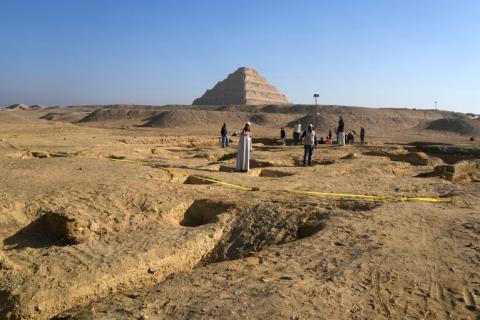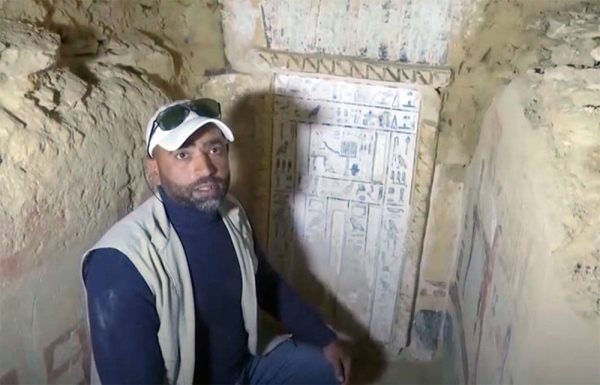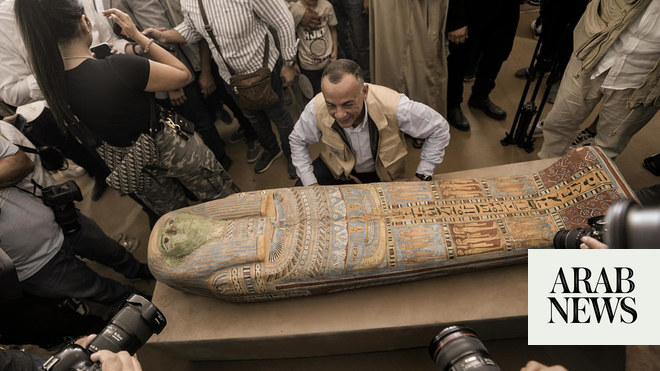
Egypt on Thursday unveiled dozens of new archaeological discoveries, including two ancient tombs, at a Pharaonic necropolis just outside of the capital Cairo.
The artifacts, unearthed during a year-long excavation, were found beneath an ancient stone enclosure near the Saqqara pyramids and date back to the fifth and sixth dynasties of the Old Kingdom, spanning from roughly 2500 B.C to 2100 B.C., Egypt's Ministry of Tourism and Antiquities said.
One of the uncovered tombs belonged to a priest from the fifth dynasty known as Khnumdjedef, while the other larger tomb belonged to an official named Meri, a palace official who held the title of “the keeper of the secrets,” The Associated Press quoted the ministry as saying. Other major findings from the excavation include statues, amulets, and a well-preserved sarcophagus.
Egypt's most renowned archaeologist and director of the excavation, Zahi Hawass, personally unveiled the new discoveries from the stone enclosure, known as Gisr al-Mudir.
‘‘I put my head inside to see what was inside the sarcophagus: A beautiful mummy of a man completely covered in layers of gold,’' Hawass said.
The Saqqara site is part of a sprawling necropolis at Egypt’s ancient capital of Memphis that includes the famed Giza Pyramids as well as smaller pyramids at Abu Sir, Dahshur and Abu Ruwaysh. The ruins of Memphis were designated a UNESCO World Heritage site in the 1970s.












